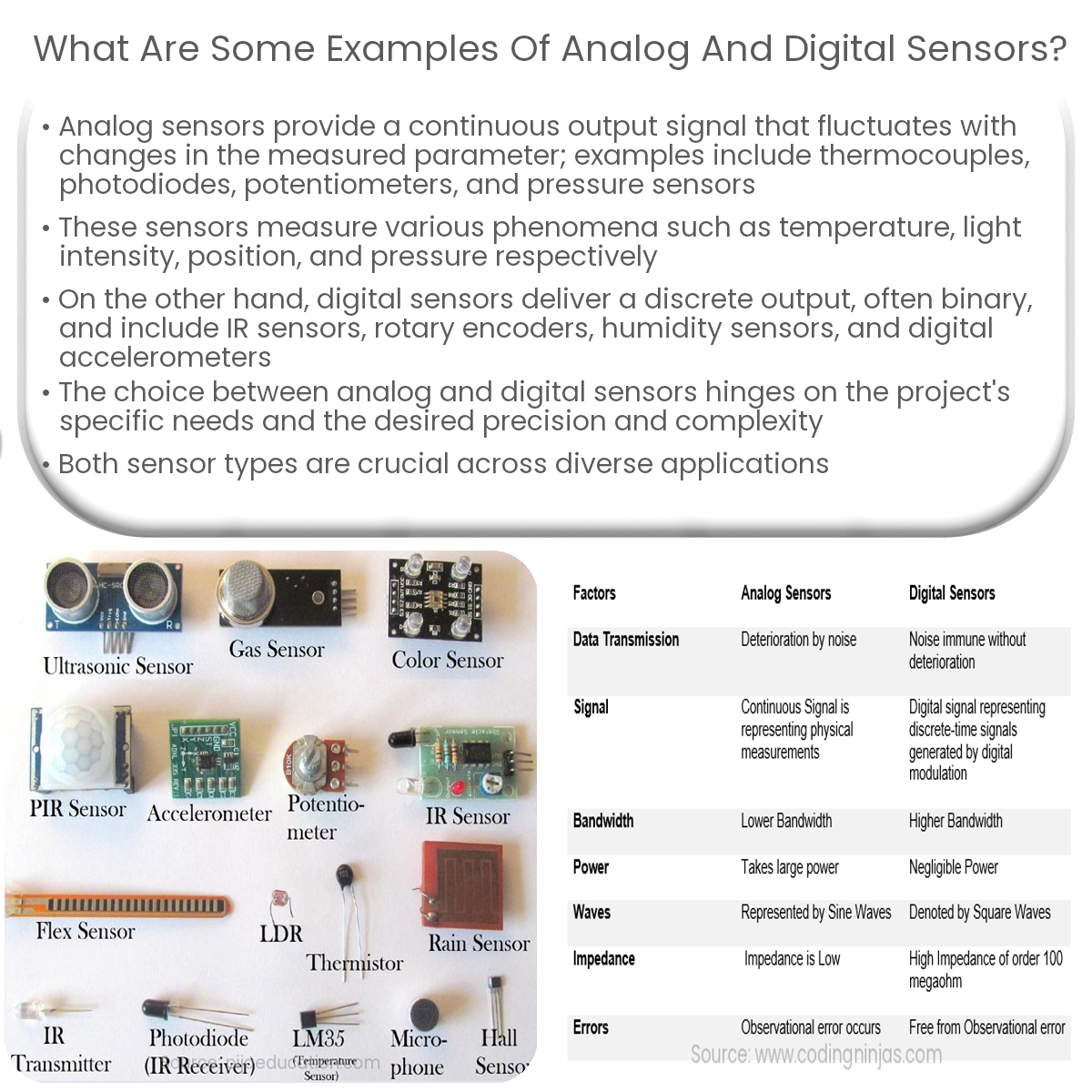Analog sensors provide continuous output signals, while digital sensors give discrete values. Examples include thermocouples and IR sensors, respectively.
Analog Sensors
Analog sensors produce a continuous output signal that varies with the changes in the measured parameter. Some common examples of analog sensors are:
Thermocouples: These sensors measure temperature by generating a voltage that depends on the temperature difference between two metal junctions.
Photodiodes: They convert light intensity into an electrical current proportional to the amount of light received.
Potentiometers: These are variable resistors that change resistance based on the position of a sliding contact, often used to measure position or displacement.
Pressure sensors: These devices generate an output voltage proportional to the applied pressure, typically using a diaphragm or strain gauge.
Digital Sensors
Digital sensors provide a discrete output signal, usually representing data in a binary format. Common examples of digital sensors include:
IR sensors: Infrared sensors detect the presence or absence of objects by emitting and receiving infrared light. They provide a digital output indicating whether an object is detected.
Encoder: Rotary encoders convert the angular position of a shaft into a digital code, which can be used to measure rotation or position in applications like robotics and motors.
Humidity sensors: Some humidity sensors use digital output protocols, such as I2C or SPI, to provide precise humidity measurements.
Accelerometers: Digital accelerometers measure acceleration along one or more axes and output the data as digital values, often using communication protocols like I2C or SPI.
In conclusion, both analog and digital sensors play crucial roles in various applications, with analog sensors providing continuous output signals and digital sensors offering discrete values. Choosing the right sensor depends on the specific requirements of the project and the desired level of precision and complexity.



